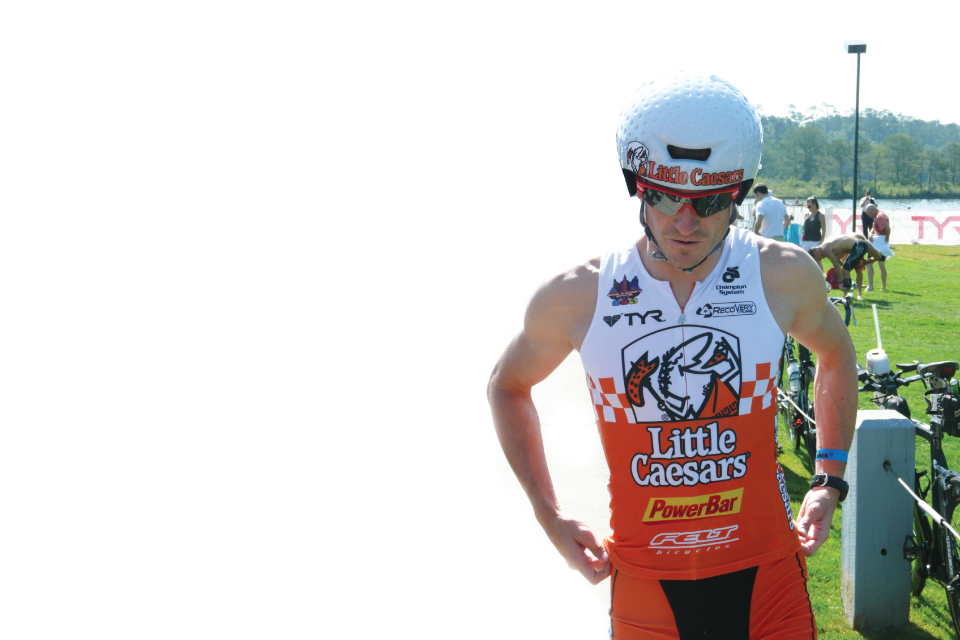Business as Usual

Casual conversations with acquaintances or strangers about my career as a professional triathlete usually lead to a single question, “Is that all you do?” I used to be annoyed and mildly offended by this question. Even though I give my heart, soul, and every hour of every day to my career, I’d feel almost as if I had to justify to these people that it is indeed ALL I do. I now understand that they aren’t making a statement about the worth of what I do; rather, the askers are trying to understand my career and fit it within the paradigm of a traditional Monday through Friday, eight-to-five job.
When I decided to make racing triathlons my career, I don’t think I quite grasped the entirety of what that would entail. While the training regime alone constitutes a full-time commitment, the business side of racing is an integral part and also the most misunderstood aspect of this job. Usually, the follow-up question to “Is that all you do?” will be “So do you just go get sponsors?” I’ve learned not to take offense to this massive understatement, as most don’t grasp the work that goes into the business side of racing. Their perspectives are built on media portrayals like “Jerry McGuire” and around daily news stories about multi-million dollar contracts signed by superstar athletes. The reality is that business is the fourth discipline in triathlon, equally as important and almost as time-consuming as swimming, biking, and running.
Racing is fun, but I look at the entirety of what I do as a small business that I own. I am my own business manager, agent, publicist, Web designer, marketing head, accountant, and administrative assistant. First and foremost, I have to build a team and a support network. Although it appears triathlon is an individual sport, I would never make it to the start line without my support network of sponsors, family, and friends. Over the years, I’ve been lucky enough to partner with great companies in sponsor relationships. I use “relationships” because work with sponsors is always a two-way street. The biggest mistake that I see young or new professionals make is possessing an attitude of “I’m a pro; what are you going to give me?” My sponsors help me in different ways (services, products, or financial support) and it’s my job to represent them in a positive manner and return value to their company in every way I can.
In my previous career, I managed relationships between a manufacturing company and its suppliers regarding quality, cost, delivery, and contracts. I’ve used this previous experience to manage my relationship with sponsors each season; the best analogy is applying for a job—except that I have to approach sponsors every year. Each fall, companies work on the next year’s marketing budget, so this is the time when sponsorship decisions are made. First, I try to find personal contacts at companies. I’ve tried the cold-contact approach dozens of times with companies to no avail. Like finding a job, making and developing a personal connection is the best way to succeed. Once I’ve made contact, I present potential sponsors with some form of proposal, sometimes a detailed marketing proposal with a business plan and other times, a race resume with a cover letter. Over weeks (sometimes months) of interaction, we work out whether the company and I are an appropriate fit and if there are opportunities there for me as an athlete. Every September through February, I go through this process dozens of times, and this takes up a big chunk of my free time. Luckily, the process can be streamlined somewhat as over the years I’ve come to develop long-lasting relationships with companies. The final step is closing sponsorship deals and negotiating contracts, acting as my own agent.
Not only do I act as my own business manager but I’m my own media consultant as well. I use my Web page (www.patrickevoe.com) as a way to keep my sponsors and the public informed happenings in my racing career. It’s important to place new content on my website as often as possible in order to drive more traffic to it, so I write and advertise blog entries, create race reports, and promote other news. In turn, I report visitor numbers to my sponsors as a way to provide tangible marketing metrics and show exposure to their brands via my website. When it comes down to it, sponsorship is part of a company’s marketing strategy, so I must provide evidence to my sponsors that their support is fully justified, and social media, like Twitter (@patrickevoe), is another means to provide tangible feedback. I also keep my sponsors updated with monthly newsletters and race reports, as I never want to be out of sight or out of mind when it comes to those who help support my career.
The remainder of my business time is dedicated to a variety of activities, such as correspondence. I receive a great number of emails with questions about training, racing, and nutrition. I try to answer as many as I can but, again, this takes additional time out of my training and racing. I also put on my administrative assistant/travel agent hat to organize all of my events and accompanying travel. For every race, there’s a process of interacting with race directors as well as coordinating and booking my travel. In addition to my blog entries on my website, I write articles for different publications (like Austin Fit Magazine). As with any other business, I must keep records and perform my own accounting. When I put all of this business management together with 30-40 hours of training time and the additional chores that go along with it, this career becomes far more than a full-time commitment—it is my life. You can understand, then, when I’m asked “Is that all you do?” that I think to myself, “Yes; it’s ALL I do!”






